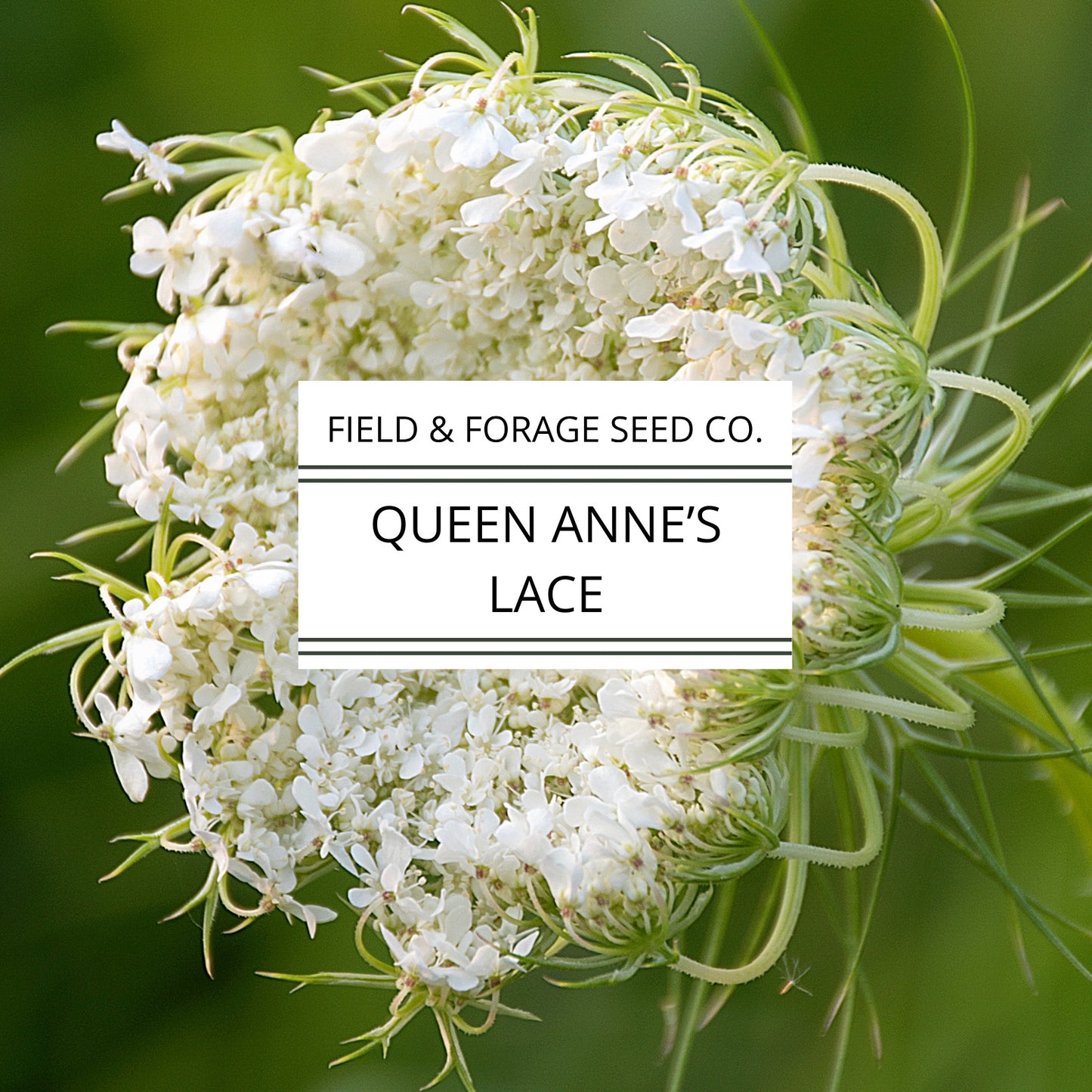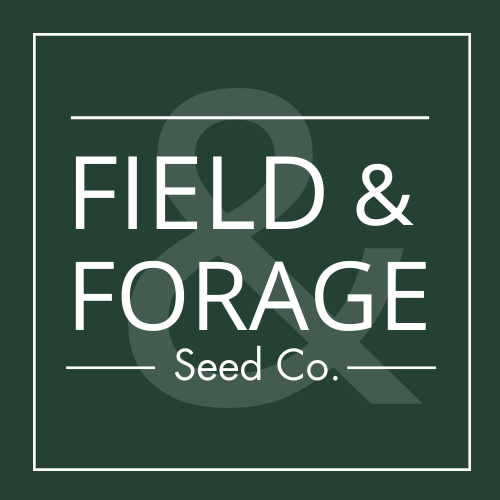Field and Forage Seed Co.
Queen Anne’s Lace Seeds | Daucus carota | Heirloom Cut Flower | 300 Seeds
Queen Anne’s Lace Seeds | Daucus carota | Heirloom Cut Flower | 300 Seeds
Couldn't load pickup availability
Queen Anne’s Lace Seeds | Daucus carota | Pollinator Wildflower | Heirloom Cut Flower | 300 Seeds
A delicate beauty rooted in history, Queen Anne’s Lace (Daucus carota) graces gardens with its airy, lacy blooms that resemble intricate embroidery. Native to Europe and naturalized across North America, this heirloom wildflower weaves elegance into meadows, gardens, and floral arrangements alike. Its charming presence has inspired folklore for centuries — said to have been named for Queen Anne of England, who pricked her finger while making lace.
Skill Level:
Easy – Ideal for beginners and naturalized garden settings! Tolerates poor soils and thrives with minimal care once established.
Pollinator Friendly:
Attracts:
• Bees
• Butterflies
• Hoverflies
• Beneficial predatory insects (like parasitic wasps)
Planting & Care Details:
• Light: Full sun to part shade
• Plant Height: 3–4 feet
• Spacing: 12" apart
• Watering: Keep soil lightly moist until established; drought-tolerant thereafter
• Soil: Well-drained, average to poor soil tolerated
• Frost Tolerance: Hardy biennial (typically grown as an annual)
• Germination: 14–21 days. Stratifying seeds (chilling them for 1–2 weeks) can improve germination rates.
• Direct Sowing: Best when direct sown after the danger of frost has passed.
To Start:
- North Florida: Sow October–February
- Central Florida: Sow October–February
-
South Florida: Sow November–January
(For northern climates: direct sow in spring after frost or fall for natural spring germination.)
Growing Tips:
• Deadhead blooms to extend flowering, or allow to self-seed for naturalizing.
• Stake if needed in windy areas.
• Be cautious identifying if foraging — resembles poisonous hemlock. Grow for beauty, not consumption.
Culinary or Ornamental Uses:
Primarily ornamental — loved for fresh bouquets, dried floral crafts, and meadow plantings. While the first-year taproot is technically edible, it is not recommended to forage unless you are highly experienced due to dangerous look-alikes.
Key Highlights:
• Timeless heirloom wildflower
• Pollinator magnet for bees, butterflies, and beneficial insects
• Drought tolerant and low maintenance
• Excellent for cut flower gardens and dried arrangements
• Naturalizes beautifully in meadows and cottage gardens
• Thrives even in poor soils
• Easy for beginner gardeners
Share

















